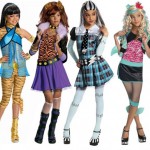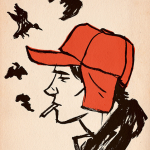When I was a kid I loved a good storm. I would gather every bucket I could find and place them around the back of our house to catch the rainwater pouring down eaves. While it rained I’d man the buckets, moving them to more efficient places, pouring smaller pails into bigger containers. I’d keep these buckets for weeks after the storm until the water turned brown from dirt and dead leaves and I would have to dump them out. Maybe I kept the water because we lived in a desert, or maybe because I wanted to keep something of the storm around after it had passed, because I hoped to capture a part of its grandeur.
Watching news coverage of storms, I would always hope for something really terrible to happen: mudslides, flash flooding, cars floating down the street, sink holes, people stranded on rooftops rescued by helicopter or boat. It’s not that I wanted people to die, I just wanted some truly incredible thing to happen, some tragedy that shook the foundations of civilization, even if it was only momentary. I felt about the same towards fires, earthquakes, mass shootings, riots, all those events that a healthy person laments and prays will never come.
Unfortunately, I’m ashamed to report, these feelings have not matured a whole lot in 20 years. I still get a thrill at the news of a great disaster and a part of me still hopes that it will be worse than expected, something wholly out of our control. The difference is that I’m old enough now to repress these feelings and ideas so that I don’t generally show my excitement when people’s lives are in danger, but it’s still there whether I admit it or not.
So, when images and reports of Hurricane Sandy hitting the East Coast start to come in on Twitter and Facebook, I felt that thrill again, particularly the images from New York City. Images of blackness where there should have been Union Square. Shots of streets flooding. Reports of the Statue of Liberty going dark. Hospitals losing backup power and having to evacuate. I’ll admit it. I didn’t read these reports and stare at these images because I had a sincere desire to pray for these poor people. I was interested because something fantastic was happening. I suspect I’m not the only one, either.
It’s never been easier to be in the midst of a natural disaster or tragedy from some safe distance. You can get instant images and reports from a multitude of sources in the middle of the event with little-to-no commentary or time to distance you from it thanks to social networks. This information might grant us the ability to care for, pray for, and provide for those in need more immediately and sympathetically, but it doesn’t, at least, not always. Instead, quite the opposite tends to happen: a natural disaster turns into yet another disembodied, raw factoid to be molded into endless iterations of memes and ironic statuses and thinly-veiled voyeurism. Obviously this isn’t always the case, but it is frequent enough to cause us to reflect on our reactions to Hurricane Sandy.
Consider, for example, how quickly fake images of the storm began to spread across the web. Or the fact that before the storm even hit, Twitter was flooded with ironic, humorous tweets about the storm–comments about how Romney would try to blame Obama for Sandy. Or how Obama would blame the storm on a YouTube video. Don’t get me wrong, these comments were funny. But they were also ridiculously callus to what was actually happening at that very moment to millions of people on the East Coast.
None of this is surprising to us, probably. By now we’re all pretty used to the ultra-inappropriate humor that defines the internet. And the media’s coverage of storms has been sensationalistic for decades, selling us natural disasters as reality TV for higher ratings. But being self-aware is our post modern condition. We get that we’re being hurtful and insensitive and voyeuristic when we trivialize an event like Sandy for retweets and Facebook Likes, but that’s kinda what makes it so funny. We know better, but we do it anyway. And perhaps something similar goes on when we get a voyeuristic thrill out of looking through images of tragedies–we know we shouldn’t use the pictures as an object for our pleasure, but we do it anyway. We are entertained by Hurricane Sandy.
Maybe we do it because we desperately want there to be something uncivilized, unaccounted for, uncontrolable in our world, something to remind us that our lives cannot be reduced to the ordered world of modernity. Or maybe we do it because our lives are oversaturated with tragedies from all over the world and our technology has invited us to objectify the suffering of others and to treat it as merely one more factoid for us to use.
In any case, my God, what a terrible human being I am.










